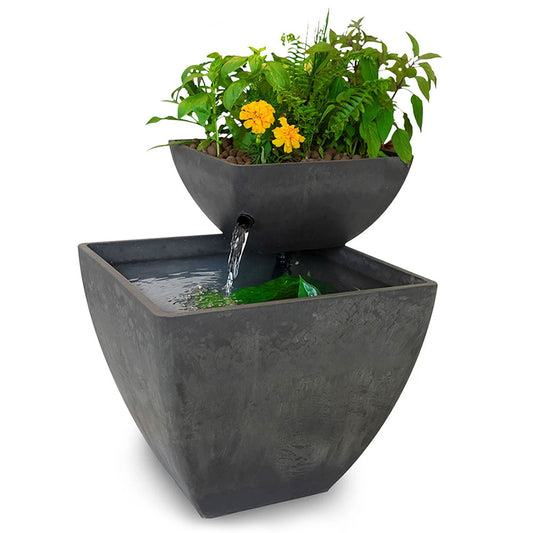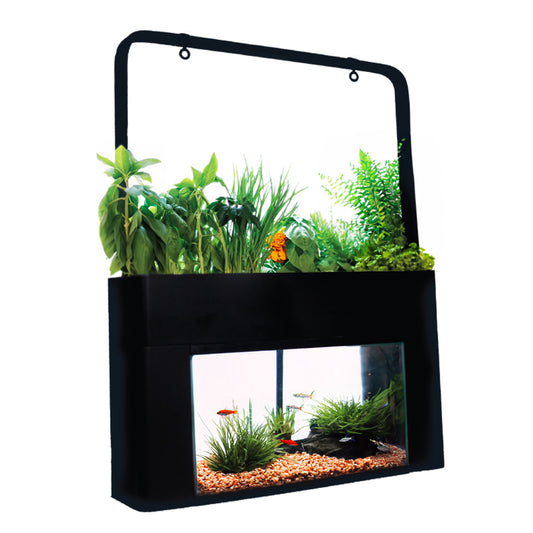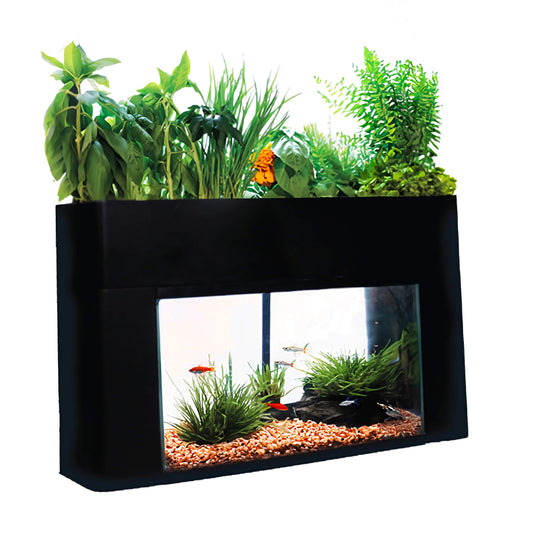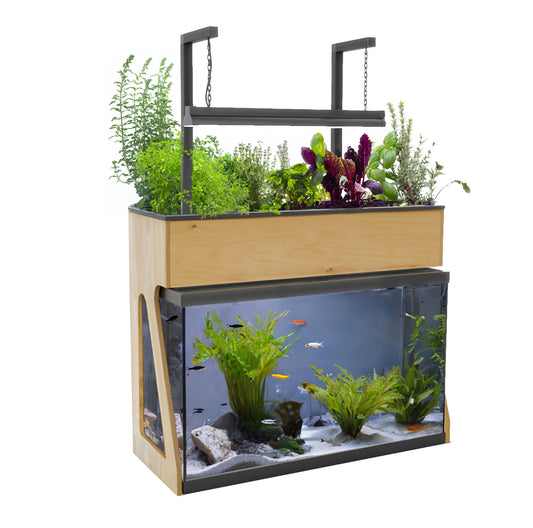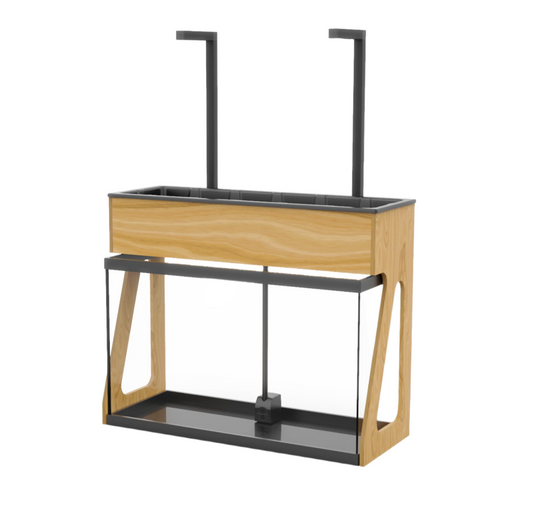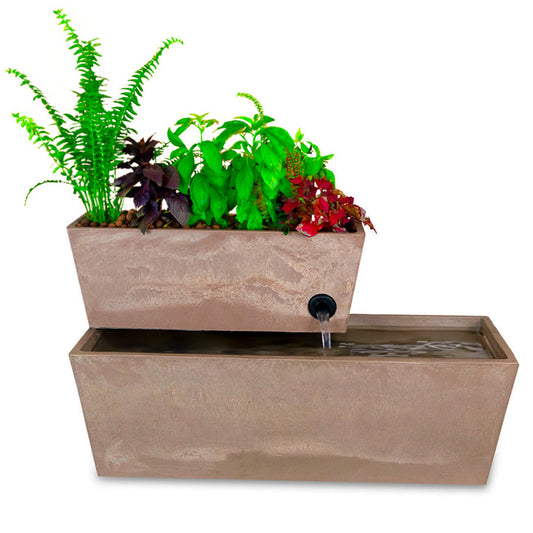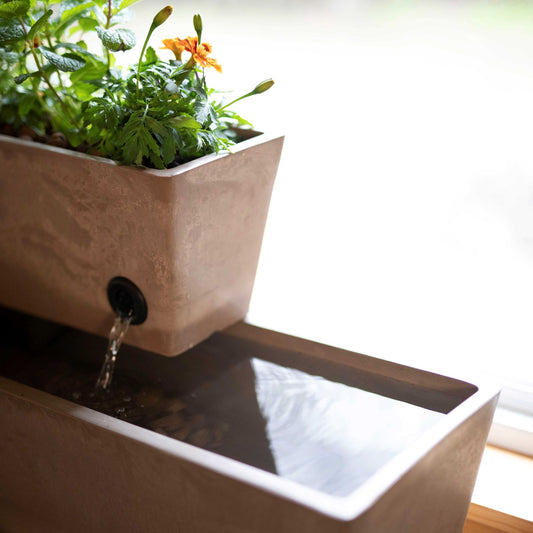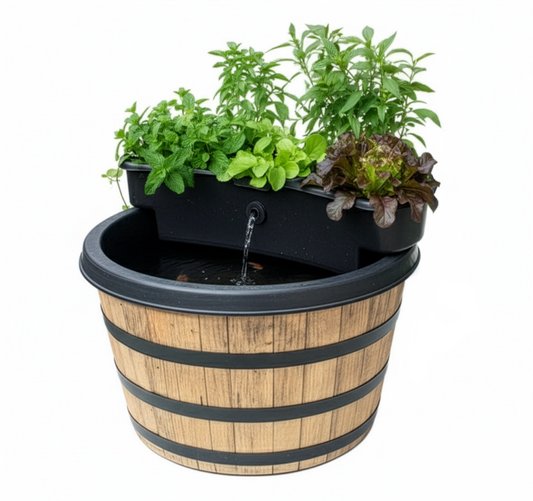Medicinal Herbs, Aquaponic Gardens, and You

Home remedies: Some of them work, some don't, and sometimes it's not clear what's medicine and what's placebo. Medicine or no, though, there's no denying a glass of orange juice and a bowl of chicken soup can make you feel cared for when you have a cold, or that a cup of chamomile tea is a soothing, relaxing experience when you're stressed.
Medicinal herbs are nearly universal in human culture; people have cultivated plants for self-care in nearly every time and place in history. Today herbal supplements are a medical industry unto themselves, but they're largely unregulated and come in a bewildering array of forms and dosages which may or may not even contain what it says on the bottle. Whether it's cost, convenience, or confidence, there are plenty of reasons to grow your own remedies! Not only will you always have the herbs you want on hand when you need them, you can also be sure of exactly what you're taking - and what went into growing it. (As a bonus, many herbs used for simple home remedies are also popular culinary ingredients, so that medicinal garden can make your life a little tastier, too!)
Check out just a few of the medicinal herbs you can easily grow at home - and some new uses for herbs you may already have.
Basil

Fans of aquaponics know basil as the culinary herb that is perhaps the single most productive, reliable crop of soilless growing, and everyone is familiar with its use in a tremendous variety of sauces, salads, and garnishes. While it's essential for pesto, basil also has a reputation for helping with gas and indigestion. What's more, while we recommend you take proper medical care of any injuries, in a pinch some herbalists apply a paste of basil leaves (especially the holy basil variety) on cuts and scrapes to promote faster healing.
Basil grows quickly and easily in healthy aquaponic systems. In fact, you may find overgrowth to be a bit of a problem as it reaches down through your drains and up into your grow lights! Harvest it frequently to control growth, and dry or chop and freeze the leaves to make sure you always have some on hand. (If you like pesto, you can even harvest a big batch of overgrown basil and make pesto ahead, then freeze it into small portions to use whenever you want - try making pesto cubes in an ice cube tray!)
Chamomile

Chamomile is widely familiar as an herbal tea made from the dried flowers of the plant. Its gentle fragrance and the warm steam of the tea would be relaxing even if the plant were just another flower, but it has been investigated for use in an impressive variety of medical applications. While the data is still unclear on many of the claims made for chamomile, it does seem to have some genuine efficacy as a mild relaxant, anti-inflammatory, and even antimicrobial, and there is some evidence that it may help reduce the severity of eczema when applied topically.
Chamomile's tiny seeds don't root well in many hydroponic media, so if you're planning to grow aquaponic chamomile, invest in some starter plugs. And here's a unique tip: if you've already grown some chamomile, it may help you grow even more plants, since some gardeners will actually use chamomile tea to soak seeds or spray plant starts to help prevent fungal infections!
Echinacea
Uh oh! While you can grow these attractive flowers aquaponically, and they make a wonderfully vivid addition to a water-wise flowerbed, the evidence for their effectiveness as a medicinal herb doesn't prove out when studied. Even the NCCIH, the American administration tasked with finding innovative applications for alternative medicines, says that the studies which have been done don't show any strong evidence for echinacea to be effective for cold or flu. Some sources trace the idea of using echinacea to treat illnesses to a mistranslation. However it got its questionable reputation, grow the Purple Coneflower for its pretty blooms; if you're down with a cough or a fever, take echinacea if you like, but make sure you also drink enough fluids and get plenty of rest!
Feverfew

From preventing migraines to reducing the pain and swelling of arthritis, the generally anti-inflammatory and analgesic properties of feverfew have been touted for centuries in many parts of the world. It's used by people just about everywhere to treat a wide range of aches and pains, and while research hasn't yet provided strong evidence as to whether it's a good remedy or, if so, just how it might work, we do know that it's chock-full of potentially bioactive compounds that just might do what people say it does. One area that does show strong potential is the prevention of chronic or migraine headache; the evidence isn't strong enough for clinical use yet, but some sufferers report significant and lasting relief from pain. Feverfew doesn't have many common side effects, but it may cause real complications for some people and is not recommended for pregnant women, so do your homework before you take it!
Feverfew tends to prefer sun, so it may get leggy indoors. Its small seeds will do better in starter plugs than placed directly in aquaponic media.
Johnny Jump-Up

Traditional herbs often have many names, and what are often called johnny-jump-ups in ornamental gardens are also referred to as heart's ease (or heartsease), wild pansy, tricolor viola, and a host of other nicknames in French, Spanish, and English. Reputed to have a number of anti-inflammatory effects including effectiveness against sore throat, dandruff, rash, and eczema, as well as fighting coughs and constipation, this colorful little flower hasn't been well-studied enough for us to recommend one way or the other on its medicinal use. However, we can say for sure that violas and pansies make wonderfully attractive and fairly easy additions to any well-lit aquaponic garden!
Lavender

Lavender is best known for its distinctive scent, used in soaps and detergents, aromatherapeutics, and virtually anywhere else someone might want a rich, clean, relaxing smell. It's also used in infusions and tinctures in drinks and desserts, and as an accent in some cuisines. Its most common medicinal application, like chamomile, is as a gentle relaxant; lavender is often used in infusions, potpourris, or even as an essential oil to aid calming and sleep. Lavender oil is often massaged into rashes or eczema, although evidence suggests that it may be the massaging, rather than the oil, which improves these conditions. Lavender oil is also reputed to treat fungal infections and act as an insect repellent, though there hasn't been much research on either claim. Regardless of its other reputed properties, though, nearly everyone seems to agree that lavender's fragrance is pleasant and relaxing, and a clean, calming olfactory environment can do wonders for your well-being.
Lavender can be a little bit tricky to grow, especially in hotter climates where it tends to wither away in the summer, and it has a reputation for disliking "wet feet" and needing good drainage. However, many plants take surprisingly well to aquaponics, and while there aren't a lot of reports, a few people have had success with lavender even in small systems, so give it a try!
Parsley

Chances are good you've already considered growing parsley. It's a common culinary herb in many Mediterranean cuisines - essential for a good tabbouleh - and it's almost a necessity to add a little extra class to a fancy plate with a sprig of parsley for garnish. Parsley oil is commonly used in fragrances (though it's too strong to be safe for medicinal use, so stick to the fresh herb if you're going to eat it!), and like many other fragrant herb oils, it's sometimes applied topically as an antibiotic, antifungal, and anti-inflammatory agent. Chewing a fresh sprig of parsley is also a great way to freshen up your breath (which is one reason it's so often served with garlicky foods!).
Parsley is a simple, undemanding crop that fares well in aquaponics and will grow for a long time with regular harvests, though it definitely prefers strong light - the more sun you can give it, the less stringy and leggy it will be!
These are only a handful of the herbs that people credit with a panoply of health benefits. Hundreds of others are cultivated for medicinal use, and tradition and folklore catalog many, many more. Growing your own herbs at home is easy - in fact, they're often to easiest plants to get into gardening with, because in many cases the compounds we find interesting in them evolved as pest and disease deterrents, and you'll find that you have far fewer problems keeping them healthy than with tasty, defenseless food crops. Whether you're a novice or a horticultural veteran, if you like the idea of growing your first line of health defense at home, take a second look at an herb garden!
(Finally, a note: Medicinal herbs have a tremendous number of known applications, and there are undoubtedly many, many more uses that haven't even come to the attention of modern society. The next wonder drug may be growing in a neat row in a remote village nobody's gotten around to researching yet! Meanwhile, however, we here at AquaSprouts care about you, and we want to encourage you to seek medical attention if you need it. Use your best judgment about home remedies, and be smart about when an injury or illness is a little beyond you and needs a doctor's care. Take good care of yourselves, because we don't just want your garden to grow and thrive, we want you to grow and thrive, too.)


